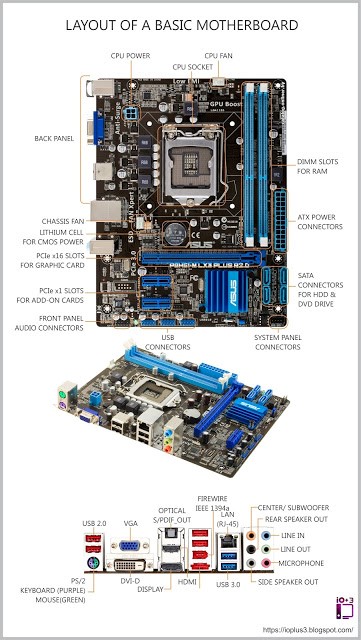A motherboard is the core of a computer system, that has the most critical components of a system connecting directly to it. A motherboard is designed to distribute power to each of its attached components and to provide a communications channel between each device. It determines many of the components that can be used in a system. The motherboard houses the CPU, the RAM, BIOS, ports, chipset, graphics & sound cards, etc. and can come in many varieties. A motherboard should be chosen based upon how the computer will be used. The most important aspect to consider when purchasing a motherboard is the type of processor that will be used for the system. Motherboards are processor specific so if you purchase an AMD processor but get a motherboard that has an Intel socket and chipset, your system will not function (Coppock, 2020).
Platform
When looking at motherboards, the first decision that needs to be addressed is which CPU will serve as the brains for your PC. Intel and AMD make the most popular and well-known processors. More information about processors can be found on our Processor page. Once the CPU has been selected, a motherboard with the right socket and chipset can be chosen. For the purpose of this page, it is not so important to understand everything that goes into making a chipset, but it’s vital to understand that you need to select a motherboard with the right chipset and the right socket for the CPU that you plan to purchase. It is also important to know that different chipsets provide different support combinations of components such as RAM, and GPUs (Coppock, 2020).
Form Factor
Motherboards come in different form factors or sizes. This provides flexibility in building a PC to fit your environment. Motherboard form factor defines the size of the motherboard and how many components are supported. Generally, the larger physical size of the motherboard, the more components it will support. A motherboard’s form factor directly relates to the PC case that will house the system. When deciding which size PC you want to build, consider how many components you want to configure now and in the future to select the motherboard form factor that fits your needs(Coppock, 2020).
Expansion Options and Connections
In addition to the CPU, the motherboard connects a variety of components via ports, slots, and connections. The number of Peripheral Component Interconnect Express (PCIe) ports vary from one motherboard to another. These slots are used to connect peripheral components within a computer case, such as networking cards, graphics cards, sound cards, and storage devices. There are four sizes of PCIe slots that dictate the size and throughput of the connection. The four slots sizes are x1, x4, x8, and x16, with x4 and x16 being the most common. RAM is stored on the motherboard via the dual in-line memory module (DIMM). The number of DIMM slots in a motherboard varies from two to eight slots and determines how much memory can be added to your PC. The motherboard also houses internal and external connections for adding storage to your PC. This article by Tom’s Hardware explains the connections, ports and chipsets of the modern motherboard. The most important things to remember about expansion slots and connections when choosing a motherboard are how many are included on the board and where they are placed. Make sure there are enough slots and connections, as well as enough space around them to fit all the components (Coppock, 2020).
